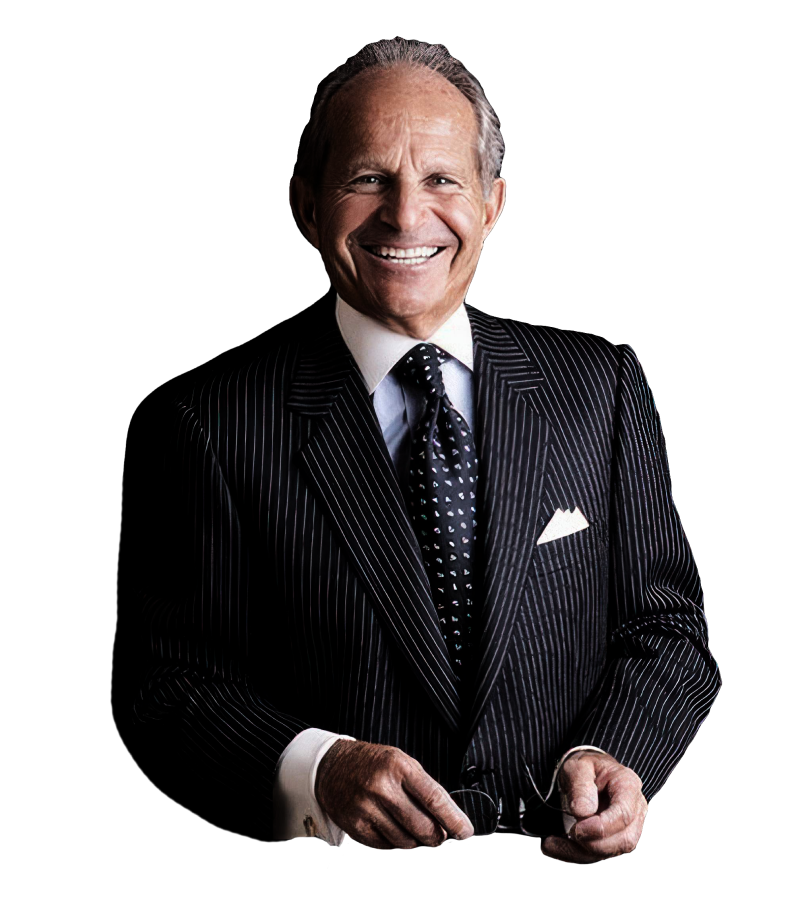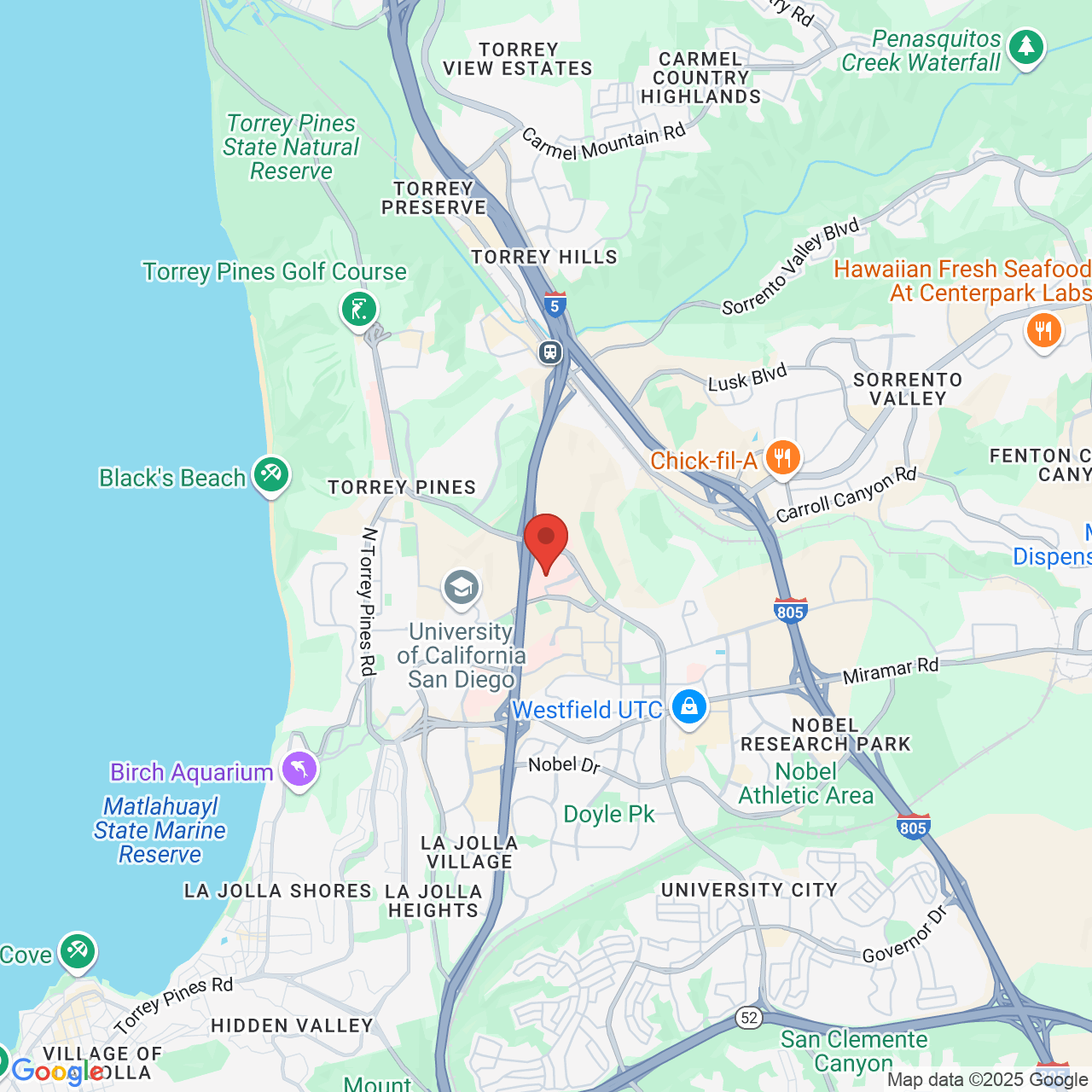Mini or Mid-Facelift in La Jolla, San Diego
A Mini Facelift or Mid Facelift can afford patients in their 30s to 50s who show early signs of aging significant improvement and rejuvenation. These less invasive, short-scar or limited-incision “maintenance” procedures are perfect for today’s youth-oriented society that emphasizes fitness and a youthful appearance. Less invasive face lift procedures diminish the progression of the signs of aging and can do away with the need for more extensive procedures in the future.
World-renowned plastic surgeon Dr. Robert Singer combines and modifies a number of facelift techniques to achieve the desired natural result while decreasing the recovery time of bruising and swelling. These less invasive facelift options can be performed alone or in conjunction with other facial surgery, such as eyelid surgery, brow lift, chin and cheek augmentation, or rhinoplasty. In some cases, a combination of a maintenance facelift and injectables like Botox, Dysport, Restylane, or Juvederm could produce the desired result.
Who Needs a Mini or Mid-Facelift?
Younger patients under the age of 50 who have less pronounced sagging skin of the face and neck may benefit from a mini or mid-facelift, which is a less extensive facelift surgery technique.
Your Mini or Mid Facelift Consultation
During your mini or mid-facelift consultation, Dr. Singer will listen to your concerns about your appearance and will examine and evaluate your facial structure in order to make a recommendation as to the best procedure for you.
If a maintenance facelift will bring you the results you want, he will explain the procedure to you in detail. If a full facelift is necessary, he will explain why. He may also recommend other surgical or non-surgical procedures in order to provide you with your desired results.
The Mini or Mid Facelift Procedure in La Jolla, San Diego
For patients who have begun to notice drooping of the cheeks and mid-face, Dr. Singer offers the mid-facelift. Unlike traditional facelift surgery, only incisions hidden behind the hairline are usually required to complete the mid-facelift and gently lift the mid-face area to a more youthful position.
Short Incision Facelifts and the limited incision MACS Lifts with incisions just in the temporal hairline offer patients customized surgical procedures for their individualized needs.
Rather than remove excess skin, younger patients may only require a repositioning, shaping, and sculpting of the tissue below the skin. In others, an isolated necklift may be performed, without a mid-facelift if most of the changes of aging are below the chin and neck.

Before & After Photos
Interested in a Facelift?
View our real patient results!
Anesthesia at our Accredited Operating Facility
At our AAAASF-accredited (American Association for Accreditation of Ambulatory Surgery Facilities) private operating facility in La Jolla, you will be taken care of by thoroughly trained personnel, including carefully selected, experienced, board-certified physician anesthesiologists.
Most of our patients are anesthetized using sedation, allowing them to be asleep while breathing on their own, but usually not requiring deeper general anesthesia. We will discuss these options with you during your consultation.
For more information about mini or mid facelift surgery in La Jolla and San Diego, contact us or call Dr. Singer at 858.455.0290
Recovery from a Mini or Mid Facelift
Recovery from a mini or mid-facelift is somewhat faster than from a full facelift, but you can expect to be off from work for 7-10 days. You will experience some bruising, swelling, and soreness for a period of weeks, but Dr. Singer will provide you with pain medication to ease your discomfort. You can minimize bruising by using topical Arnica Montana 1-2 days before and after surgery.
Following the procedure, you will have a soft head wrap around your head and under your chin to minimize swelling. Just behind each ear, you may also have a tube with a ball on the end of it called a drain. We will teach you how to empty these drains every night. The drains will generally be removed in the office in 1-2 days, and the head wrap will be freshened or removed at 3-5 days. Some of the stitches will be removed 4-5 days after surgery and the remainder at about 2 weeks.
You should “take it easy” the day of your operation and the following days.
Depending on the kind of work you do, you may return to your job as soon as you are comfortable. Sleep on your back for 2 weeks, elevating your upper body on 2-3 pillows. By keeping your head elevated above your heart, swelling can be minimized. Avoid aspirin, alcohol, smoking, and driving for 5 days after your surgery. You may wash your hair after the dressings have been removed, but do not use a hot hair dryer, electric rollers, curling irons, or hair coloring for 4-6 weeks following surgery. You can apply makeup after the bandages have been removed, as long as you keep the makeup away from the incisions for 2 weeks.
Strenuous sports and exercise should be avoided for 3 weeks, and refrain from any activity that significantly raises your body temperature and/or blood pressure for 3 weeks, such as hot tubbing, sex, and brisk walking.
Most people can expect the results of a mini or mid-facelift to last between 8-12 years.
Frequently Asked Questions
Mini Facelift
What is a mini cheek or facelift?
It is a term that describes a modified facelift. There are variations and it means something different to each surgeon. Some call it an “S Lift”, “J Lift’, Short Scar Facelift, or a number of “trade-marked” names that are variations of the procedure and are used as marketing tools.
Who would benefit from a mini lift?
It is appropriate for patients who have early jowling and minimal neck aging. It is best for patients in their mid-40’s-50.
What is the downtime versus a standard facelift?
The procedure is a smaller procedure with less dissection and usually less downtime than a traditional facelift, but it varies from patient to patient.
Where is a mini or a face or cheek lift performed?
It can be performed at Singer Surgical Centre which is an AAAASF accredited full surgical facility.
What are the risks associated with a modified or mini face or cheek lift?
The risk of potential complications is low, but any surgical procedure carries the possibility of complications which include: bleeding, delayed healing, and asymmetries. In any surgery of the face, there is a remote possibility of a temporary bruising of a branch of the facial nerve which can result in temporary weakness of one of the branches.
What is the recovery like after a modified face or cheek lift?
Every patient heals differently and most patients look reasonable after 7-12 days. Swelling and bruising are usually less than in patients with a greater amount of laxity requiring a full facelift.
Are there scars from a mini or modified face or cheek lift?
Anytime you make an incision, there is a scar. They are meticulously placed in order to minimize the scars which are usually well concealed and generally blend in with time.
Is a mini or modified face or cheek lift painful?
Pain tolerance varies from patient to patient but most say that it is more of a discomfort than a painful feeling. Patients are given a low dose pain medication to relieve the discomfort.
What is involved in a mini or modified facelift?
Ideally, to get the best cosmetic result, it should be individualized based on the patient’s anatomy. It generally involves an incision in the temporal hairline which extends inside the ear and occasionally extending for a short distance behind the ear in the normal crease. The SMAS layer which is beneath the skin and overlying the underlying muscles and parotid gland is elevated and tightened as is the loose platysma muscle of the neck. These tissues are sutured into an elevated position which produces a more longstanding result than just tightening the skin. Doing this also improves the quality of the scar by minimizing the tension placed on the skin closure. The skin is then re-draped and the excess portion is removed. The incision is closed in layers with sutures. A small drain is often placed behind the ear and a compression dressing is applied.
When can I resume exercising after a modified or mini facelift?
Generally, we recommend waiting three weeks after surgery before resuming strenuous activities and exercise.
Who is a good candidate for a mini facelift?
Ideally patients should not have any significant underlying medical problems or have a history of bleeding disorders or active smokers. A mini facelift is not for those looking for a dramatic result, but for those who want a subtle refreshed look.
Mid Facelift
Is a midface lift/cheek lift safe?
The risk of potential complications is low, but any surgical procedure carries the possibility of complications which include: bleeding, delayed healing, and asymmetries. In any surgery of the face, there is a remote possibility of a temporary bruising of a branch of the facial nerve which can result in temporary weakness of one of the branches.
How long does the procedure take?
Midface lifts take about 1 ½-3 hours to complete.
Can I have other procedures done at the same time as a midface lift?
Patients frequently opt to have other rejuvenating procedures done at the same surgery. These can include: Eyelid lifting (blepharoplasty), brow lifting, micro-fat grafts, and neck contouring. Having multiple procedures on the same day may lengthen the recovery time, but it allows the patient to accomplish many goals with one surgery and have one recovery period.
Are the results of a midface lift natural appearing?
In the hands of an experienced artistic plastic surgeon, the results of a midface lift are very natural, and generate a young, healthy appearance.
Are there other ways to improve my smile lines?
Aside from midface lift surgery, the best treatment for smile lines (or “nasolabial folds”) is the injection of a hyaluronic acid (Restylane, Juvaderm). These products give an effective, but temporary, remedy for deep smile lines. Micro-fat grafts produce a similar but long lasting result. In general 30-50% of the injected fat remains permanently. They are often performed in conjunction with a midface lift to further enhance the results. Remember that filling the nasolabial folds will not elevate or replace soft tissue in the cheek.
Do I need anesthesia for the midface lift?
It is generally performed with intravenous sedation plus local anesthesia or with general anesthesia, both of which are administered by a board-certified M.D. anesthesiologist.
Where is the midface lift procedure performed?
It is performed at the Singer Surgical Centre, an outpatient office-based surgery center, which is fully accredited, by the American Association for Accreditation of Ambulatory Surgery Facilities (AAAASF). Most patients go home the same day as the surgery.
What’s involved with a midfacelift?
Preoperative and postoperative mid facelift instructions are the same as for a facelift.
When can I return to work after my midfacelift procedure?
Patients typically return to work and activities anywhere from seven to ten days although restrictions limiting exercising, heavy lifting, bending and straining along with aerobic activity remain for three weeks following the procedure.
Is the healing time less with a midfacelift?
In general, yes, but healing is very individual. Midface lifts involve less dissection and muscle tightening so there is less bruising. Patients typically return to work and activities in about seven to ten days although restrictions limiting exercising, heavy lifting, bending and straining along with aerobic activity remain for three weeks following the mid facelift procedure.
Where are the incisions for a midfacelift?
The scars of a midface lift are well hidden in the hair of the temple above your ears (your hair will not be cut or shaved), and possibly in a natural crease just below the lower eyelid lashes. Depending on individual anatomy, a small component of the incision may be placed in front of the upper portion of the ear. The incision is much less than required in a full facelift. As with all procedures, Dr. Singer will use the smallest incisions possible for your midface lift.
What is the difference between a full facelift and a midface lift?
The traditional facelift focuses on the central and lower face and neck, while the midface lift focuses on the central third of the face, or the cheeks between the eyes and the upper lip. The changes that occur with aging in this area include deepening of the fold between the cheek and upper lip (also called the naso-labial fold). Although part of the reason that this fold deepens can be attributed to age-related volume loss, sagging skin and underlying tissues also contribute to the tired, sad look associated with these lines. Although the goal of the midface lift, like the traditional facelift, is to rejuvenate the face, the techniques are different and the area that is improved is more limited.
How do I know if I need a midfacelift or a full facelift?
A large number of factors, including your age, your genetic disposition, the amount of sun exposure, your skin type, general medical history, and your history of tobacco use can all affect facial aging. When aging has occurred in the central face, lower face and neck, the traditional facelift is a better option for rejuvenation. The midface lift is used for rejuvenation in the middle third of the face, between the eyes and the upper lip. The best way to know for certain what is best for you is to ask your questions at a consultation with Dr. Singer.
Am I a candidate for a midface lift?
A mid-face lift like any procedure should be individualized to achieve a natural appearing result. Ideal candidates for the midface lift do not have medical conditions that can impair healing or increase risk of surgery, are not active smokers, are realistic about the potential results, properly motivated, and have deep hollows beneath their eyes (and eye bags), deep smile lines, and sagging of the midface area (the cheeks between the eyes and upper lip). This starts in some patients in their mid-thirties and becomes more prominent during the decade between 40 and 50 years of age. In order to counter the effects of this aging, the midface lift restores the padding of the bony rim beneath the lower eyelid, allows for more skin removal (the wrinkled, lined skin of the lower eyelid) without eyelid changes, and softens the smile lines by raising the cheeks to their more youthful position. It can be performed together with an endoscopic brow lift to rejuvenate the forehead and brow at the same time.
What is a midfacelift?
The midface lift, also called a cheek lift, addresses the middle third of the face, between the eyes and the upper lip. It is performed when a more subtle, but still significant, improvement is needed. A cheek lift elevates the fat pad in the cheek (called the malar fat pad), providing fullness to the eyes and cheeks – leading to a refreshed, rejuvenated look. Although the goal of the midface lift, like the traditional facelift, is to rejuvenate the face, the techniques are different. Both techniques are used to address drooping or sagging skin, wrinkles, and other signs of premature aging, but the midface lift is performed with minimal incisions that are hidden from view within the hair and possibly under the lower eyelid lashes. In addition, many patients who qualify for the midface lift do not require significant skin redraping, may need less muscle tightening and therefore may have less swelling and bruising immediately after the procedure.
Why Choose Dr. Singer?
Dr. Singer has the respect of his peers and patients across San Diego and the surrounding Southern California area. He has helped thousands of San Diego residents with an eye for balance and beauty and the skills of an artist. Dr. Singer has been engaged in private practice in the La Jolla area of San Diego since 1976 and is now an internationally recognized plastic surgeon. You are in the best of hands with Board Certified Plastic Surgeon (American Board of Plastic Surgery) Dr. Singer.
Please learn more about Dr. Singer’s affiliations, memberships, awards, honors, and accomplishments. The full list and Dr. Singer’s curriculum vitae are available upon request.











